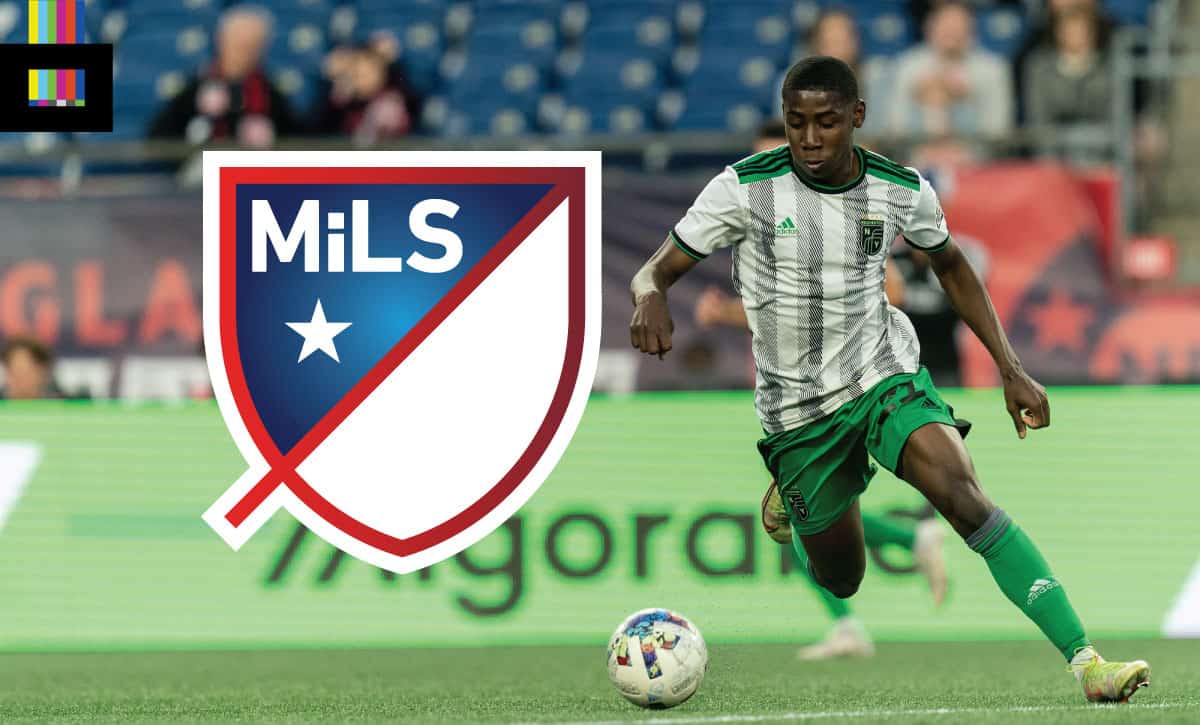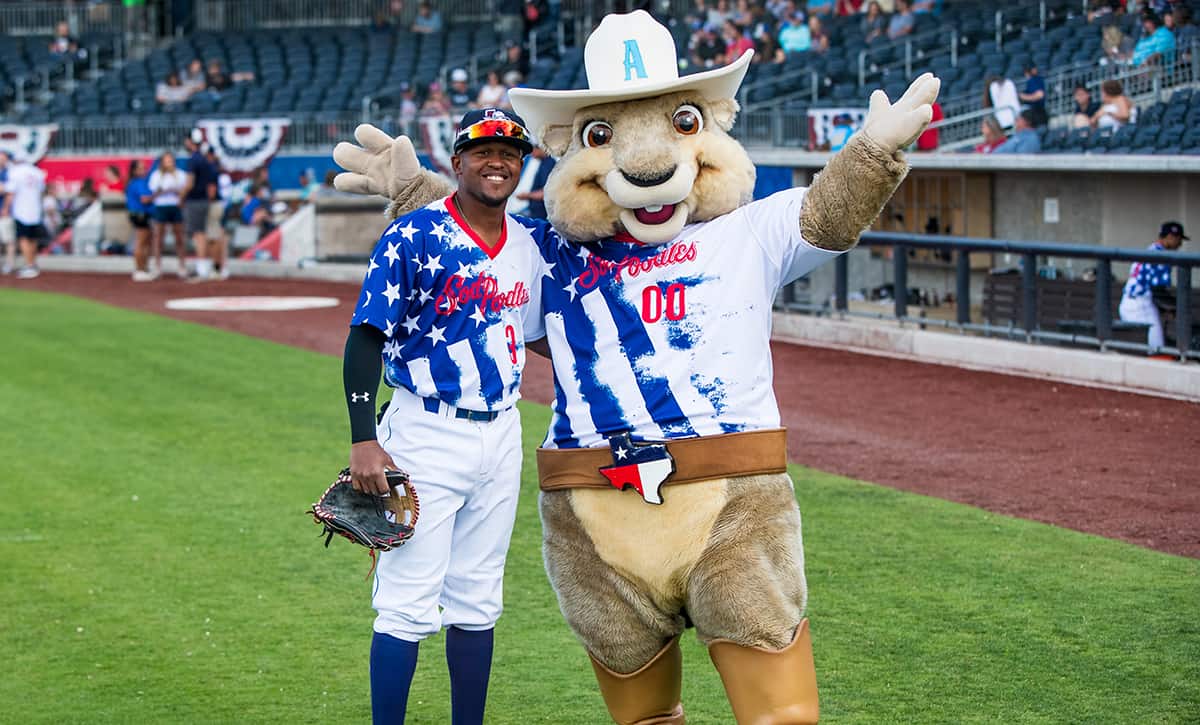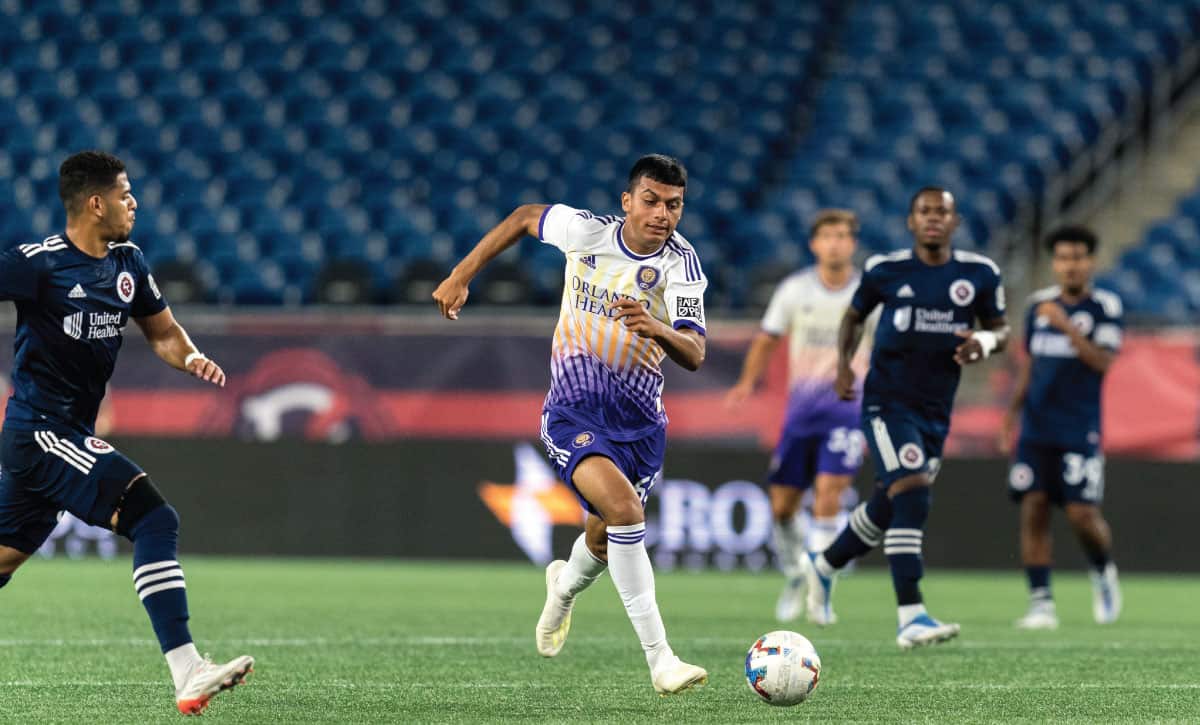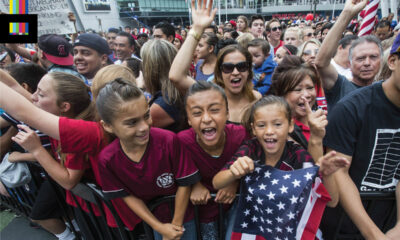
“Minor League Soccer” – a catch-all phrase that’s been used to describe anything that isn’t the top division in the United States. It’s a phrase that was reinforced when our domestic first division league cleverly branded itself Major League Soccer when launching in the 1990s.
“Minor league” carries a certain stigma here. In every other North American sport it describes a specific league setup. That is, teams located usually in smaller markets, either affiliated with or outright owned by teams in the associated major league, and existing primarily for the purpose of developing players for their parent clubs.
While there have been periods when teams in lower leagues have had affiliation deals with higher clubs – most notably the recent stretch when MLS had an affiliation agreement with USL – this is not how soccer works in the USA. This is why I always try to make a point to use the terms “lower division,” or “Division 2” etcetera to denote the difference between soccer and other sports.
The clubs that populate these lower divisions are mostly independently owned clubs with no relationship to any higher level team. And while we do not have promotion and relegation in North America, through the U.S. Open Cup, these clubs still have the opportunity to play official, competitive games against teams from a higher league – something totally unique in American sports.
Being unshackled from control of the reigning major league is, at least in part, what has allowed clubs in the lower divisions to grow and thrive like never before over the past decade. Clubs are free to sign whatever players they want (at least if they can afford them). They can make a genuine connection to the community they play in. Players and coaches can decide to stay there and in many cases make a home, and a decent living, with a club for many years. Supporters can get attached to those personalities. And those fans can truly cheer for their home town, not a team that happens to have their home town’s name on its shirt but really represents some other organization hundreds of miles away.
Of course, certain lower division clubs often take players on loan from higher division teams, and most of the players, coaches, staff and even owners are always looking for an opportunity to move up to a higher level. This is no different than any other lower division in the world. Everyone involved wants to get to the highest level possible, and club ownership will rarely turn their nose up at adding a few players with no hit to the wage bill.
But there has never been a fully-fledged American-style “Minor League” in soccer before – until now.
The Major gets its Minor
This spring, MLS launched MLS NEXT Pro (MLSNP), a USSF-sanctioned Division 3 professional league. For the 2023 season, it will be comprised of 29 teams, 28 of which will be reserve teams fully controlled by their MLS affiliate, many of whom formally played in USL’s Championship and/or League One divisions. The 29th team, and only independent entry thus far, in MLSNP is Rochester New York FC. Formally known as the Rochester (Raging) Rhinos, they are the last non-MLS club to win the US Open Cup (1999). All of the current reserve teams play in the same market as their parent club, either at their parent club’s main stadium, training facility, or another nearby small venue.
Where things begin to get interesting is with the latest announcement, that Nashville SC’s reserve team starting next year will play two hours away in Huntsville, Alabama. Whether the team will have its own branding or will be named something like “Nashville SC 2” remains to be seen, but either way this is a clear move to expand the regional influence of the MLS side. It also very likely takes a potential market off the board for USL, who is now a direct competitor with MLS in the Division 3 (and broader lower division) space.
The jockeying between MLS and USL could have major consequences on the future of the game in the US. And if things eventually tilt towards the type of league structure MLS is crafting, much of the progress the game has made beyond MLS over the last 20 years could be lost.
Beyond the individual clubs that make it up, MLS itself is also a business, like any other American professional sports league. And every dollar that is spent on soccer in the US – by fans, owners, sponsors, and networks – that isn’t spent on MLS is bad for their business.
Every Detroit, Louisville, New Mexico or Sacramento drawing 5,000, 7,000, or 10,000 people to games and pulling decent interest on local TV is a market that less likely to care about the closest MLS team to them. Less likely to buy merchandise. Less likely to tune in to the national TV games (or subscribe to the league’s upcoming Apple TV service).
The execs at MLS HQ would surely love to have what Major League Baseball, the National Basketball Association and National Hockey League have. And that’s the entirety of the infrastructure for the adult men’s side of the sport explicitly serving 30-32 teams at the top of the pyramid. That control also includes instilling the perception into both fans and the media that those 30-32 teams are the only ones that matter.
But the business model that works for other sports’ lower leagues quickly falls apart for soccer.
Play Ball

Silly mascots, wacky team names and jerseys, fireworks and giveaways – the hallmarks of minor league American sports
While the details vary from sport to sport, most minor leagues in North America operate on similar principles.
Outside of a few fledgling independent leagues, they all have affiliation agreements with higher level team(s) who subsidize some, if not all, of the salary costs for players and coaches. Many teams are independently owned by local owners, or ownership groups who sometimes own a stable of minor league outfits in various cities. Some are outright owned by their parent club.
What makes these teams sustainable investments, especially in baseball, is the “fun, affordable family entertainment” angle and all the bells and whistles that come along with it. Fireworks shows. Bobblehead giveaways. Spongebob Theme Night complete with goofy jerseys. Food and drink specials. All that stuff.
The game itself and the score at the end of the game really don’t matter at all. And I say that as someone who absolutely adores Minor League Baseball. It’s all the other stuff that really sells tickets. It’s all of those things that make up the experience.
The difference experience with “Minor League Soccer”
But it’s an entirely different experience than soccer. In most minor league towns in other sports, people attend for a relatively cheap and fun night out, they might purchase a t-shirt or cap, but really don’t care too much about the team itself. They have a big league club (not necessarily the parent team of the local minor league outfit) that is their main focus. However in soccer, many fans across the US count their local lower division club as their legitimate passion – they live and die with every goal and every win and loss (or draw). They travel to away games. They dedicate countless hours of their time and a significant chunk of money to supporting the club. That level of passion simply doesn’t exist in other “minor league” sports.
Then you’ve got the problem that a lot of the gimmicks that drive attendance in other lower league sports simply don’t translate to the beautiful game. There aren’t nine (or more) convenient stoppages throughout the night to go and get food, meander around the concourse and take the kids to the play zone. You’ll miss half the game. No breaks in the action to focus on whatever trivia question or dance cam is on the scoreboard or to look at your phone.
Sure, some domestic soccer clubs have tried a few of these gimmicky-style add-ons to draw in fans, to varying levels of success. But at the end of the day soccer almost demands that you pay attention to the action in front of you. The game itself is the main event, the atmosphere and experience is entirely driven by it. And if the game has no stakes, why should you care? Why would anyone stand and sing and bang drums? Why would anyone travel to an away match? Why would the media cover it?
In general, they won’t. It’s plainly obvious if you look at the attendance figures and general interest for the MLS reserve teams compared to the independent clubs in USL and other leagues. Even if MLS makes somewhat of an effort to brand the team as unique or locate it outside of the parent club’s main market, support is still relatively anemic compared to the independent clubs.
If the entire pyramid was ever to evolve into something like this, it would be a major problem for the sport in this country.
A Step Backwards

Largely meaningless games played in largely empty stadiums. Is this really what is best for developing players?
Let’s imagine a theoretical scenario where that’s what happens. Maybe it’s just one minor league like basketball has, maybe it’s two or more levels of leagues like baseball and hockey. But let’s say the year is 2030 and, for whatever circumstances might have caused the shift, the majority of lower division professional clubs that exist are affiliates or outright reserve squads of Major League Soccer teams.
That would mean that the majority of pro clubs that exist in the country are either outright B-teams or affiliates whose entire player/coaching infrastructure are controlled by a parent club. It would see the majority of games played at training grounds or small collegiate venues – either way likely in front of small, apathetic crowds. Some could be played with no crowd at all if the parent club deems that the interest level from fans isn’t enough to justify the cost of opening up a stadium and staffing it. Nobody singing, waving flags – no atmosphere at all. Even if there were a smattering of independent clubs such as Rochester NY FC, when most of the matches on the schedule are against teams like “Sporting KC II” or “Orlando City B”, its hard for fans in those indy towns to get excited about the competition.
There’d hardly be anyone watching on TV or streaming. No real stakes to any of the results since you can’t get promoted (or even have the slim hope of attracting investors to purchase your way up the pyramid as is the case now). Few, if any, interesting Open Cup matches since reserve teams aren’t allowed in the competition.
Reserve leagues aren’t a real test
Reserve teams exists all over the world, and don’t get me wrong, they can be a valuable tool for clubs grooming their developmental players. But is it not better for players to be honing their skills in a more realistic environment? One that better replicates the pressure of playing for a first team, because it is a first team? Is it not better for fans and their communities to have clubs that truly represent and play for them, and not for some other team halfway across the country?
These are the questions we as supporters, and the United States Soccer Federation as overseers of the game, have to ask ourselves as the sport continues to evolve here. With the introduction of things such as MLS NEXT Pro and Leagues Cup, the suspension of promotion and relegation in Mexico, and the imminent restructuring of the Concacaf club ecosystem, with each passing year the game in North America becomes more of an insulated, self-contained pocket – set up to benefit only a select few.
As in 1994, we again eagerly await the arrival of a World Cup and the game’s biggest stage to our shores. Unlike ’94, this World Cup comes to us not as a spark of rebirth for the sport domestically, but as an exclamation point after three decades of unprecedented growth in the professional game here. However, I fear that the spectacle and joy of the Cup may coincide with a period of devolution in the game overall, squandering much of the progress that has been made since the turn of the century.
Photo credits: Getty Images
200+ Channels With Sports & News
- Starting price: $33/mo. for fubo Latino Package
- Watch Premier League, World Cup, Euro 2024 & more
Live & On Demand TV Streaming
- Price: $35/mo. for Sling Blue
- Watch Premier League, World Cup & MLS
Many Sports & ESPN Originals
- Price: $9.99/mo. (or get ESPN+, Hulu & Disney+ for $13.99/mo.)
- Features Bundesliga, LaLiga, Championship, & more
2,000+ soccer games per year
- Price: $4.99/mo
- Features Champions League, Serie A, Europa League & NWSL
175 Premier League Games & PL TV
- Starting price: $4.99/mo. for Peacock Premium
- Watch 175 exclusive EPL games per season
110+ channels, live & on-demand
- Price: $59.95/mo. for Plus Package
- Includes FOX, FS1, ESPN, TUDN & more






















dave
July 28, 2022 at 5:49 pm
Interesting perspective. I agree attending minor league baseball games can be a great experience even when the on-field product is poor
.
I have been impressed by the stadium atmospheres (MLS and lower league) in US Open Cup, so I see how the existing model is appealing to its fans. Data and the eyeball test align in suggesting domestic US soccer leagues do a great job drawing fans to stadiums. Large and passionate crowds for Detroit-Louisville and Sacramento-KC stood out. However the domestic US model may evolve, I hope experiences like those are maintained
Roberto
July 28, 2022 at 10:21 am
Below is a comment calling WST Euro-snobs. There is some truth to that when the semi-finals of the U.S. open cup does not make their news. Sacramento of the USL managed to get into the finals after KC managed to hit the woodwork several times.
Orlando played one of the best second halves I have seen in quite a while. Maybe these games will be covered in the pod-cast.
Christopher Harris
July 28, 2022 at 10:35 am
We mentioned the US Open Cup on our Twitter page:
https://twitter.com/worldsoccertalk/status/1552620654465253376
Overall, our niche is covering the soccer TV and streaming news, as well as news from around the global leagues. We don’t focus a lot on match reports, but I’m sure the games will be mentioned in the next podcast episode where discuss what we’ve been watching.
Roberto
July 28, 2022 at 11:19 am
Thanks Chris, will look forward to the podcast.
The twitter story is only available to subscribers.
Christopher Harris
July 28, 2022 at 11:23 am
You don’t have to subscribe to Twitter to see the post.
Asko
July 28, 2022 at 12:13 am
USL pro/rel with a strong financial backing from an all-in Tv network and investors would offer something different to the American soccer landscape. Currently my city has a USL team, which plays at the same time as MLS, so I just don’t follow MLS, which like USL, is mostly competing for viewership in its own local markets. Soccer fans in Louisville now follow their own team and have no interest in Cincy or Nashville. Fans in Indy are not going to Chicago Fire games. MLS will not change its structure, but due to their model, they may reach their peak with viewership.
TheGreatestOne
July 27, 2022 at 3:29 pm
Garbage of the highest order. Anyone who wants a bunch of regional leagues, pro/rel, and another cup competition is clinically insane at the very best.
Linking to your objectively awful article about the “war” between MLS and USL that you completely made up out of thin air doesn’t offer the support for this one that you think it does.
Just admit that you, and everyone at WST, are just anti-MLS Eurosnobs who hate the fact that the most successful league in US history doesn’t operate according to your precious little conventions that aren’t relevant in a landscape with a much larger country than any of those you so desperately cling to as well as 4 major sports that hold a much larger place in the conscience of the average sports fan in the US.
Asko
July 28, 2022 at 12:22 am
Very harsh comment, but the same eurosnobs that trash and make fun of mls on regular basis are on the most popular soccer show on television. Like it or not, MLS is still viewed as a retirement league and players from Europe chose their MLS teams based on their climate. The article is biased, but it’s an opinion, that an author is entitled to share.
Russ
July 27, 2022 at 2:14 pm
Excellent article and observations .. The thing that all US franchise models have in common (hamburgers, football, pizza, baseball, fried chicken, basketball, etc) is ‘mediocrity’. No one goes to McDonalds or Pizza Hut to experience the best example of what a hamburger or pizza can be. In every case it is about packaging a product that has mass market appeal, in return for the promise of profit, which is achieved by the elimination of competition aka “risk” .. I include the NFL, MLB, NBA in the list because 1) the model is essentially the same; 2) More importantly, with these sports there really are no comparables. They all herald and glorify the end of season winners as “world champions” but there is really no way of knowing or proving it, because the competition is comprised of a mere 32, 30 and 30 teams respectively .. in a country of 330M people! When you carve up a geography and population into fairly large chunks like that, and apply restrictive business practices, quality, choice and competition go out the door .. As with football, baseball and basketball, the fans are none the wiser, because what they see is all they have been sold, and therefore all they know. The same goes for the media companies, commentators and pundits who are really only extension of the model and similarly drinking from the same fountain .. As has been proven time and again, the fans exist to serve the model, not the other way around .. But when it comes to soccer the comparables are all too apparent, available and preferable .. And as it turns out, as your article explains, when sport mirrors ‘real’ life (aka ‘real’ risk/reward) and is rooted in local community ownership, literally and metaphorically, fans and communities get on board .. And so do players and coaches, because of the exponential increase in career opportunities, which in turn increases the size and quality of the player and coach pool, which in turn lifts the profile of the national game internationally, and importantly its ability to compete at the highest levels .. Talking of which, another way of looking at this is to ask: To what extent has the establishment of MLS contributed to the possibility that the US will at some point win the World Cup? .. And given where the US professional games stands today, are we getting any closer?
Roberto
July 27, 2022 at 4:02 pm
Great question. For too long world football in the U.S. required young players that wanted to move up to pro leagues to join pay to play teams. In the rest of the world football is a working class game. Now that the MLS & USL have academies and youth teams we are starting to see more than just rich kids trying out for pro teams.
In the neighborhood in So. Seattle where I lived for many years (30+ years ago) the Sounders have built a 5 a side pitch. This area still has new residents from around the world moving in and they may make it attractive to other local youth to take up the game.
Sorry this a very winding way to get to the answer. So, yes the U.S. is getting closer to being competitive in the world cup. The bigger the pool of players the more talent will be available and hopefully a better team in the future.
Russ
July 27, 2022 at 5:05 pm
Hi Roberto – I agree, the academies and youth teams are a step in the right direction and show promise; and the 5 a side pitch in Seattle is a great way to create grass roots engagement (after all, it is really house basketball is fueled in the inner cities) but there needs to be a lot more of the same .. If I may recommend “The Talent Code” by Daniel Coyle, you will read how Brazil became a powerhouse soccer nation through the playing of futsal, a small-sided version of soccer that concentrates decision making and play into a small playing area, and increase the number of touches (learning opportunities) by orders of magnitude .. Simply providing more places for young people to learn the game by playing vs being coached would transform the adoption and level of play in the US.
Matt Hofer
July 27, 2022 at 9:45 am
Good article, but the Rochester (Raging) Rhinos won in 1999, not 1998. They also made the final in 1996.
Derek Reese
July 27, 2022 at 1:04 pm
Thanks for catching that! Brain let me down on that one, ha! Went ahead and corrected it.